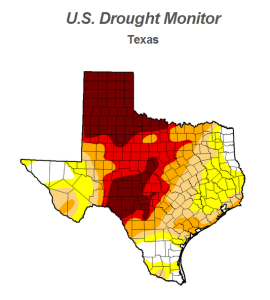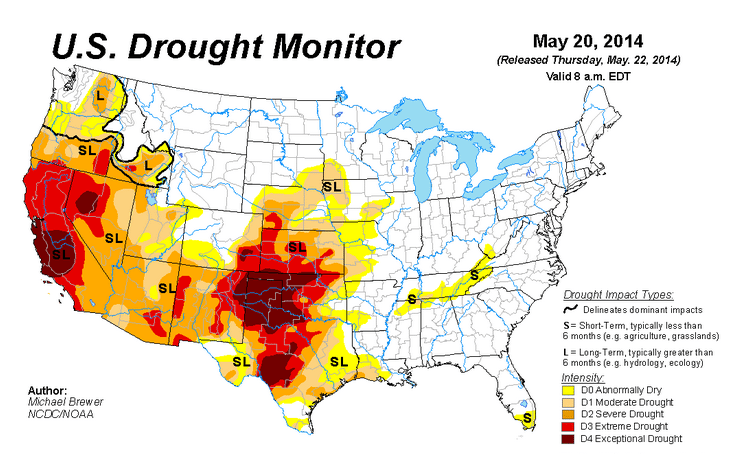The Drought of 2014
The official beginning of summer has yet to arrive but more than 90% of Texas is officially classified as “Abnormally Dry” or worse. The summer droughts of 2011 and 2013 were brutal and caused extensive damage to homes and home foundations. What do the “dog days” of summer 2014 have planned for us?

As of May 20, 2014 the U.S. Drought Monitor has published the following statistics regarding Texas and its drought status.
90.18% of Texas is “Abnormally Dry” or worse
72.31% of Texas is “Moderate Drought” or worse
56.11% of Texas is “Severe Drought” or worse
40.35% of Texas is “Extreme Drought” or worse
25.05% of Texas is “Exceptional Drought”
In addition to the discouraging numbers above the drought in Texas is classified as both short-term and long-term. Short-term is considered six months or less and affects agricultural and grasslands most acutely. Long-term is considered six months or longer and affects hydrology and ecology most acutely.
For comparison purposes, the drought status for Texas on May 28 of 2013 is below.
96.51% of Texas was “Abnormally Dry” or worse
88.27% of Texas was “Moderate Drought” or worse
60.34% of Texas was “Severe Drought” or worse
32.45% of Texas was “Extreme Drought” or worse
16.02% of Texas was “Exceptional Drought”
To further compare, the drought status for Texas on May 24 of 2011, one of the worst droughts in history, is below.
97.70% of Texas was “Abnormally Dry” or worse
95.77% of Texas was “Moderate Drought” or worse
91.97% of Texas was “Severe Drought” or worse
78.45% of Texas was “Extreme Drought” or worse
43.97% of Texas was “Exceptional Drought”
What does this all mean? The predictions are for a dry, hot summer. If there is little or no rain then we can expect a drought as bad as 2013 and perhaps as bad as 2011. It all depends on the weather patterns and the amount of rain we have in the next three months.
The reason droughts affect concrete slab foundations so dramatically is because the clay soils in Texas will shrink in volume when they lose moisture. With plants and trees withdrawing moisture from the ground, and severe drought conditions present, the clay soils will shrink dramatically. When the clay soils shrink they “pull away” from the foundation perimeter and leave a gap between the soil and the bottom of the concrete foundation. When this gap becomes too large the weight of the home and foundation will crack the concrete slab and it will “fall down” until it reaches something to support it, which is the shrunken soil. The term used to describe this process is settlement. This is why droughts are so damaging to home foundations.

For more information about droughts and foundation repair please return to the home page.
